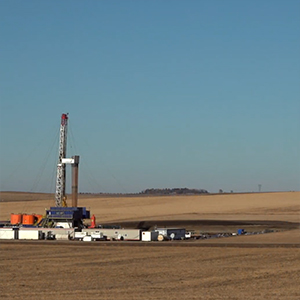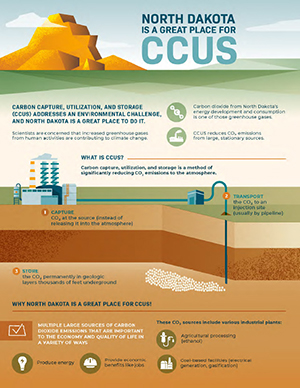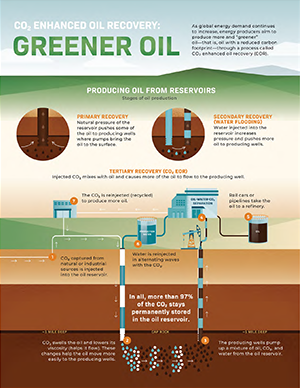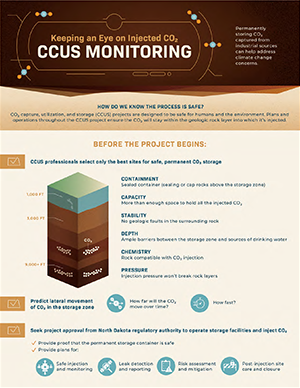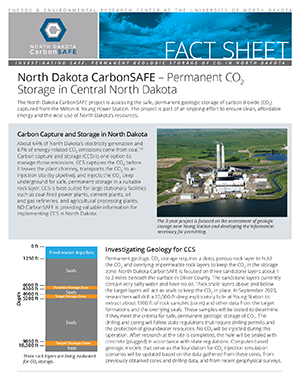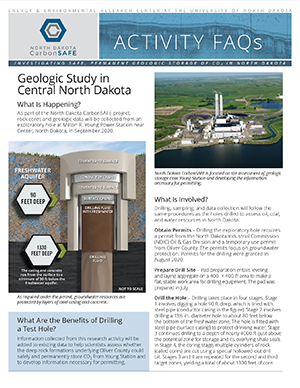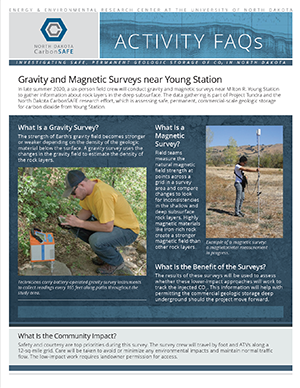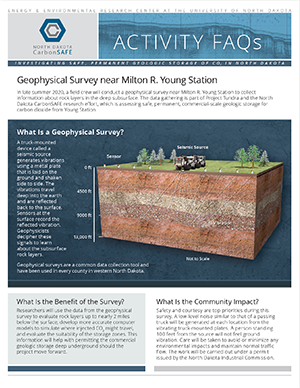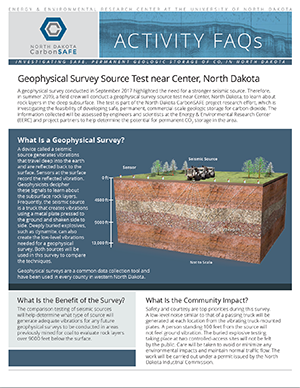North Dakota CarbonSAFE
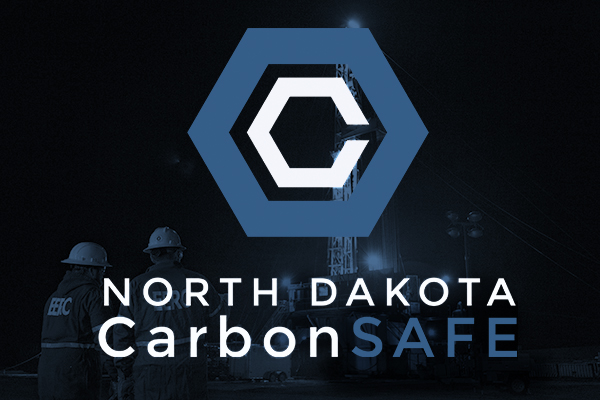
Demonstrating the Potential for Permanently Storing CO2
The U.S. Department of Energy’s (DOE’s) CarbonSAFE Initiative projects focus on development of geologic storage sites for the storage of 50+ million metric tons of CO2 from industrial sources. Goals of the CarbonSAFE projects are to improve and optimize procedures related to: 1) project site screening and selection; 2) site characterization; 3) baseline monitoring; and 4) subsurface monitoring. In addition, CarbonSAFE is looking to compile the information necessary to submit appropriate permits and design injection and monitoring strategies for commercial-scale projects.
The CarbonSAFE Initiative builds off the work done by the Regional Carbon Sequestration Partnerships to fund and develop projects ready for integrated CCUS system deployment in the 2025-2030 time frame.
The North Dakota-based CarbonSAFE projects are part of ongoing regional efforts to ensure reliable, affordable energy, the wise use of North Dakota's resources, and foster wide-scale commercial deployment of carbon capture, utilization, and storage (CCUS).
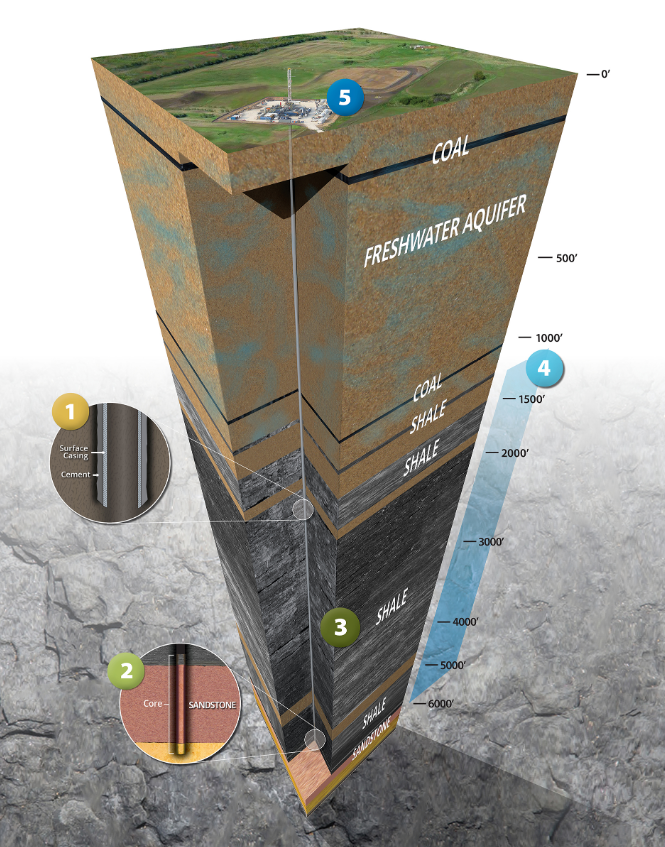
CarbonSAFE Phases
Phase 1: Pre-Feasibility
Leveraging the success of the PCOR Partnership activities, the EERC and its partners were able to bypass the CarbonSAFE Initiative’s pre-feasibility phase (Phase I) and start with the feasibility study (Phase II).
Phase 2: Feasibility
The Phase II feasibility study ran from mid-2017 through early 2020. The major activity in the project was drilling two deep exploratory holes—one in Oliver County and one in Mercer County. The exploratory holes allowed researchers to collect geologic core samples, water, and other rock data from deep underground to better assess whether the deep subsurface geology could be used for safe, permanent storage of CO2. After the data extraction was complete, the holes were plugged with cement and the land restored in accordance with state regulations. The information from the exploratory holes, along with other data collected from the fieldwork, guided the development of computer-based geologic models and CO2 injection simulation scenarios.
North Dakota CarbonSAFE Phase II also investigated the public acceptance of CCUS in central North Dakota, economic feasibility, state and federal regulations, and potential risks associated with permanent geologic storage.
Phase 3: Site Characterization
In the fall of 2020, the North Dakota CarbonSAFE project began Phase III of the DOE initiative. Phase III is a 3-year effort that covers site characterization and permitting. As part of this effort, the Energy & Environmental Research Center (EERC) and its partners drilled an exploratory well and conducted a geophysical survey in the area around Minnkota Power Cooperative’s Milton R. Young Station to fully characterize two geologic formations about 1 to 2 miles below the surface. These geologic data were incorporated into the North Dakota CO2 storage facility permit applications that Minnkota Power Cooperative submitted to North Dakota state entities to develop a geologic site for permanent CO2 storage as part of Project Tundra. The storage facility permit applications were approved by the state in January of 2022.
North Dakota CarbonSAFE Partners
North Dakota CarbonSAFE is led by the EERC at the University of North Dakota. Partners in the Phase II effort included the DOE National Energy Technology Laboratory, Minnkota Power Cooperative, the North Dakota Industrial Commission’s Lignite Research Program, Basin Electric Power Cooperative, ALLETE Clean Energy, BNI Energy, the North American Coal Corporation, Computer Modelling Group Ltd., Schlumberger, and Prairie Public Television.
Partners in the Phase III effort include DOE National Energy Technology Laboratory, Minnkota Power Cooperative, Computer Modelling Group Ltd., and Schlumberger.

